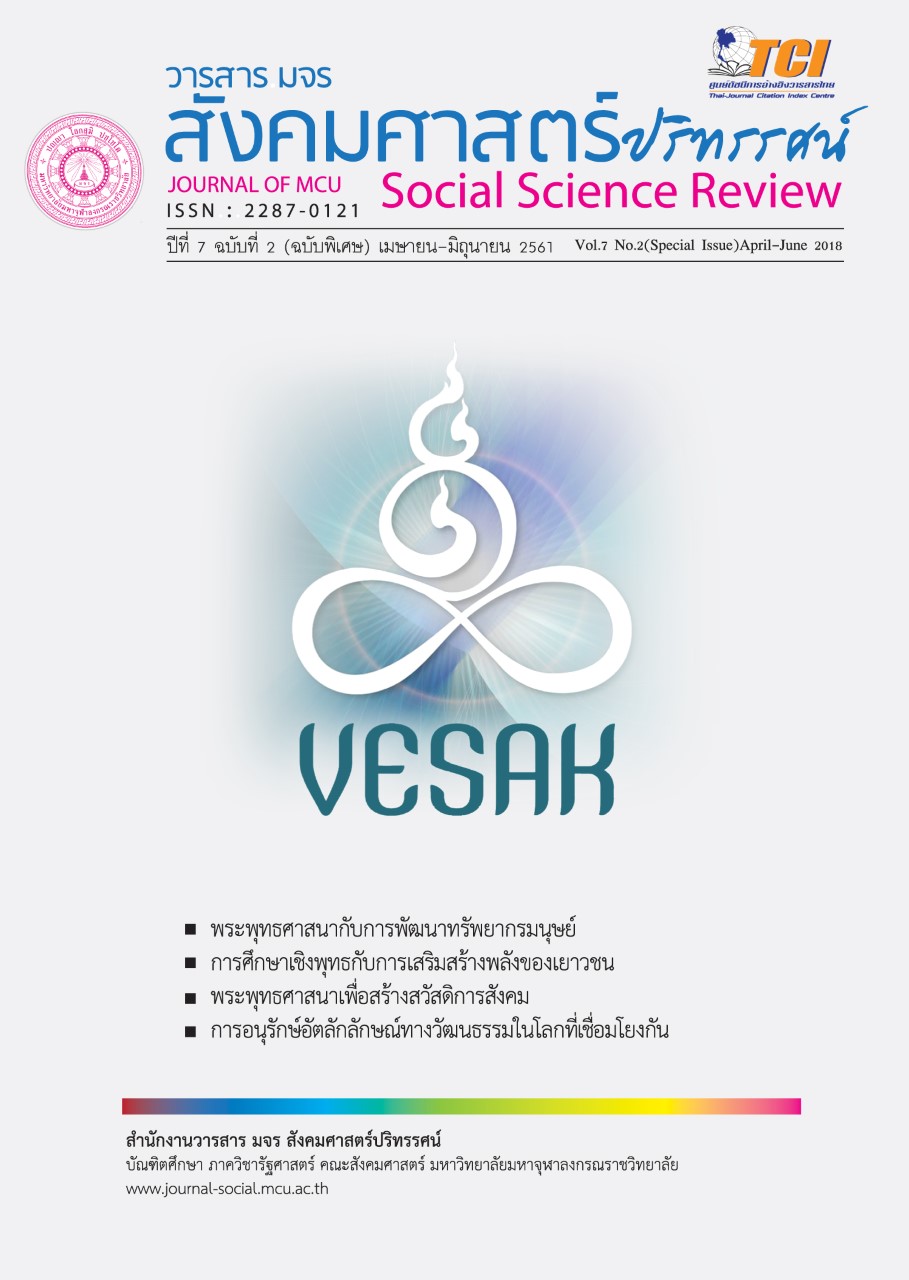การพัฒนากลยุทธ์การยกระดับผลสัมฤทธิ์ทางการเรียน ของโรงเรียนประถมศึกษาขนาดกลาง
คำสำคัญ:
การพัฒนากลยุทธ์ การยกระดับผลสัมฤทธิ์ทางการเรียน โรงเรียนขนาดกลางบทคัดย่อ
การวิจัยครั้งนี้มีวัตถุประสงค์เพื่อพัฒนาและประเมินกลยุทธ์การยกระดับผลสัมฤทธิ์ทางการเรียนของโรงเรียนประถมศึกษาขนาดกลาง มีวิธีดำเนินการวิจัย แบ่งเป็น 2 ระยะ คือ ระยะที่ 1 การพัฒนากลยุทธ์การยกระดับผลสัมฤทธิ์ทางการเรียน โดยมีการดำเนินการ 2 ขั้นตอน คือ1)การสร้างกลยุทธ์การยกระดับผลสัมฤทธิ์ทางการเรียน เครื่องมือในการวิจัย คือแนวคำถามเชิงลึก เก็บรวบรวมข้อมูลโดยผู้วิจัยสัมภาษณ์ด้วยตนเอง นำมาวิเคราะห์ข้อมูล เชิงเนื้อหา สร้างข้อสรุป 2) การยืนยันกลยุทธ์การยกระดับผลสัมฤทธิ์ทางการเรียนเครื่องมือที่ใช้ในการวิจัยเป็นแบบสอบถาม ความคิดเห็น แบบชนิดมาตราส่วนประมาณค่า 5 ระดับการเก็บรวบรวมข้อมูลผู้วิจัย ส่งแบบสอบถามเก็บรวบรวมข้อมูลทางไปรษณีย์ การวิเคราะห์ข้อมูล หาค่าทางสถิติโดยการวิเคราะห์ค่ามัธยฐาน และค่าพิสัยระหว่างควอไทล์ ระยะที่ 2 การประเมินความเป็นไปได้ในการปฏิบัติตามกลยุทธ์การยกระดับผลสัมฤทธิ์ทางการเรียนของโรงเรียนประถมศึกษาขนาดกลาง เครื่องมือที่ใช้ในการวิจัยเป็นแบบสอบถาม มาตราส่วนประมาณค่า 5 ระดับ การวิเคราะห์ข้อมูล หาค่าทางสถิติโดยการวิเคราะห์ค่าเฉลี่ยร้อยละ ( ) และค่าส่วนเบี่ยงเบนมาตรฐาน (S.D)
ผลการวิจัยพบว่า
1. กลยุทธ์การยกระดับผลสัมฤทธิ์ทางการเรียนของโรงเรียนประถมศึกษาขนาดกลาง ประกอบด้วย 3 ขั้นตอน ดังนี้ 1) การวิเคราะห์สภาพปัจจุบันเกี่ยวกับผลสัมฤทธิ์ทางการเรียน ประกอบด้วย 7 กิจกรรมขั้นตอนที่ 2 การพัฒนากลยุทธ์และนำกลยุทธ์สู่การปฏิบัติ มี 5 ด้านคือ1)ด้านการส่งเสริมการจัดการเรียนรู้ของผู้เรียน จำนวน13 กิจกรรม 2)ด้านการส่งเสริมให้ครูจัดการเรียนการสอนอย่างมีคุณภาพ จำนวน 10 กิจกรรม 3)ด้านการบริหารและการจัดการของผู้บริหารสถานศึกษา จำนวน 15 กิจกรรม 4) ด้านการนิเทศภายในและภายนอกที่มีประสิทธิภาพ จำนวน 7 กิจกรรม5) ด้านการมีส่วนร่วมของคณะกรรมการสถานศึกษา ผู้ปกครอง ชุมชนและเครือข่าย จำนวน 8 กิจกรรมและขั้นตอนที่ 3 การประเมินความก้าวหน้าของงานตามเป้าหมาย จำนวน 8 กิจกรรม
2.การประเมินความเป็นไปได้ในการปฏิบัติตามกลยุทธ์ จากผู้ตอบแบบสอบถาม จำนวน 990 คน โดยจำแนกเป็นผู้บริหารสถานศึกษา 330 คน หัวหน้าครูวิชาการ 330 คน และผู้ปกครองนักเรียนที่เป็นกรรมการสถานศึกษา 330 คน พบว่า ผู้บริหารสถานศึกษา มีค่าเฉลี่ย 4.54 อยู่ในระดับมากที่สุด หัวหน้าครูวิชาการมีค่าเฉลี่ย 4.66 ในระดับมากที่สุด และผู้ปกครองนักเรียนที่เป็นกรรมการสถานศึกษา มีค่าเฉลี่ย 4.58อยู่ในระดับมากที่สุด สรุปได้ว่าโดยรวมทั้ง 3ขั้นตอน68 กิจกรรมมีความเป็นไปได้ในการนำไปปฏิบัติอยู่ในระดับมากที่สุด
เอกสารอ้างอิง
Certro, Samuel C., and Peter J. Paul. (1991). Strategic Management : Concepts andApplications. Singapore : McGraw-Hill, Inc.
David, Fred R. (2005). Strategic management. Concepts and cases.10thef. New Jersey : Pearson Prentice hall.
Good, Carter V. (1973). Dictionary of Education. New York : McGraw-Hill. Inc.
Wright, Peter. And Charles D. Prigle., and Mark J. Kroll. (1992). Strategic
management text and cases. Massachusetts :allyn and Bacon
ดาวน์โหลด
รูปแบบการอ้างอิง
ฉบับ
ประเภทบทความ
สัญญาอนุญาต
ลิขสิทธิ์ (c) 2020 วารสาร มจร สังคมศาสตร์ปริทรรศน์

อนุญาตภายใต้เงื่อนไข Creative Commons Attribution-NonCommercial-NoDerivatives 4.0 International License.
เพื่อให้เป็นไปตามกฎหมายลิขสิทธิ์ ผู้นิพนธ์ทุกท่านต้องลงลายมือชื่อในแบบฟอร์มใบมอบลิขสิทธิ์บทความให้แก่วารสารฯ พร้อมกับบทความต้นฉบับที่ได้แก้ไขครั้งสุดท้าย นอกจากนี้ ผู้นิพนธ์ทุกท่านต้องยืนยันว่าบทความต้นฉบับที่ส่งมาตีพิมพ์นั้น ได้ส่งมาตีพิมพ์เฉพาะในวารสาร มจร สังคมศาสตร์ปริทรรศน์ เพียงแห่งเดียวเท่านั้น หากมีการใช้ภาพหรือตารางหรือเนื้อหาอื่นๆ ของผู้นิพนธ์อื่นที่ปรากฏในสิ่งตีพิมพ์อื่นมาแล้ว ผู้นิพนธ์ต้องขออนุญาตเจ้าของลิขสิทธิ์ก่อน พร้อมทั้งแสดงหนังสือที่ได้รับการยินยอมต่อบรรณาธิการ ก่อนที่บทความจะได้รับการตีพิมพ์ หากไม่เป็นไปตามข้อกำหนดเบื้องต้น ทางวารสารจะถอดบทความของท่านออกโดยไม่มีข้อยกเว้นใดๆ ทั้งสิ้น





